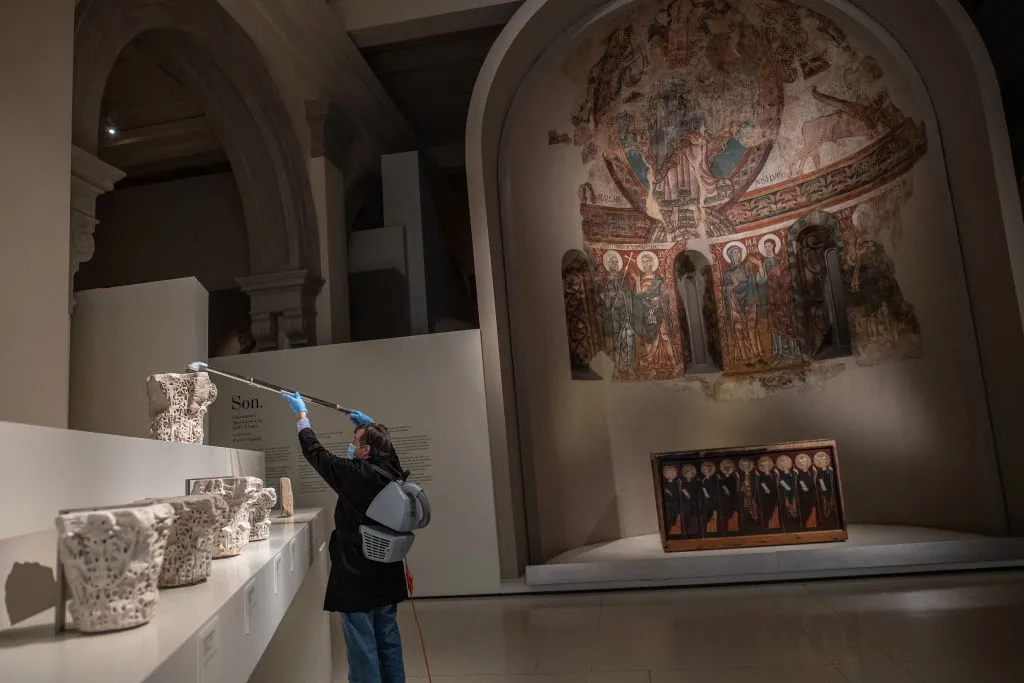
A small protest broke out Monday morning outside the National Art Museum of Catalonia (MNAC) as Aragonese technicians arrived to inspect a set of contested 13th-century murals that were ordered to be returned to the Sijena Monastery by Spain’s Supreme Court.
According to El País, fewer than 50 demonstrators—organized by the Catalan National Assembly and joined by figures such as former Catalan president Laura Borràs and ANC president Lluís Llach—gathered to oppose the court’s decision. Chanting slogans like “It’s not justice, it’s a plunder,” the group failed to intercept the Aragonese team, which entered the museum discreetly through a side entrance.
The visit marks a significant step in enforcing the controversial ruling, which concluded more than a decade of litigation over the Romanesque murals, removed from the Sijena Monastery in 1936 after a fire during the Spanish Civil War. Though the works have been housed at MNAC ever since, the court found that the original religious order had never lawfully transferred ownership.
The Aragonese team, led by restorer Natalia Martínez de Pisón, began their work with the so-called profane murals—less fragile sections that may be the first to move. Their inspection, which will continue through Wednesday, includes photogrammetry to assess condition and viability for transport.
Museum officials, however, remain adamant that relocating the more delicate frescoes, especially those salvaged from the chapter house, could cause irreversible damage. MNAC has submitted filings warning the court of the risks and is expected to formally contest the execution order on conservation grounds.
MNAC is proposing a phased approach, starting with sturdier works removed in the 1960s. But the fate of the core murals—already mounted, reconstructed, and climate-protected—remains uncertain, caught between judicial mandate and the limits of preservation.
